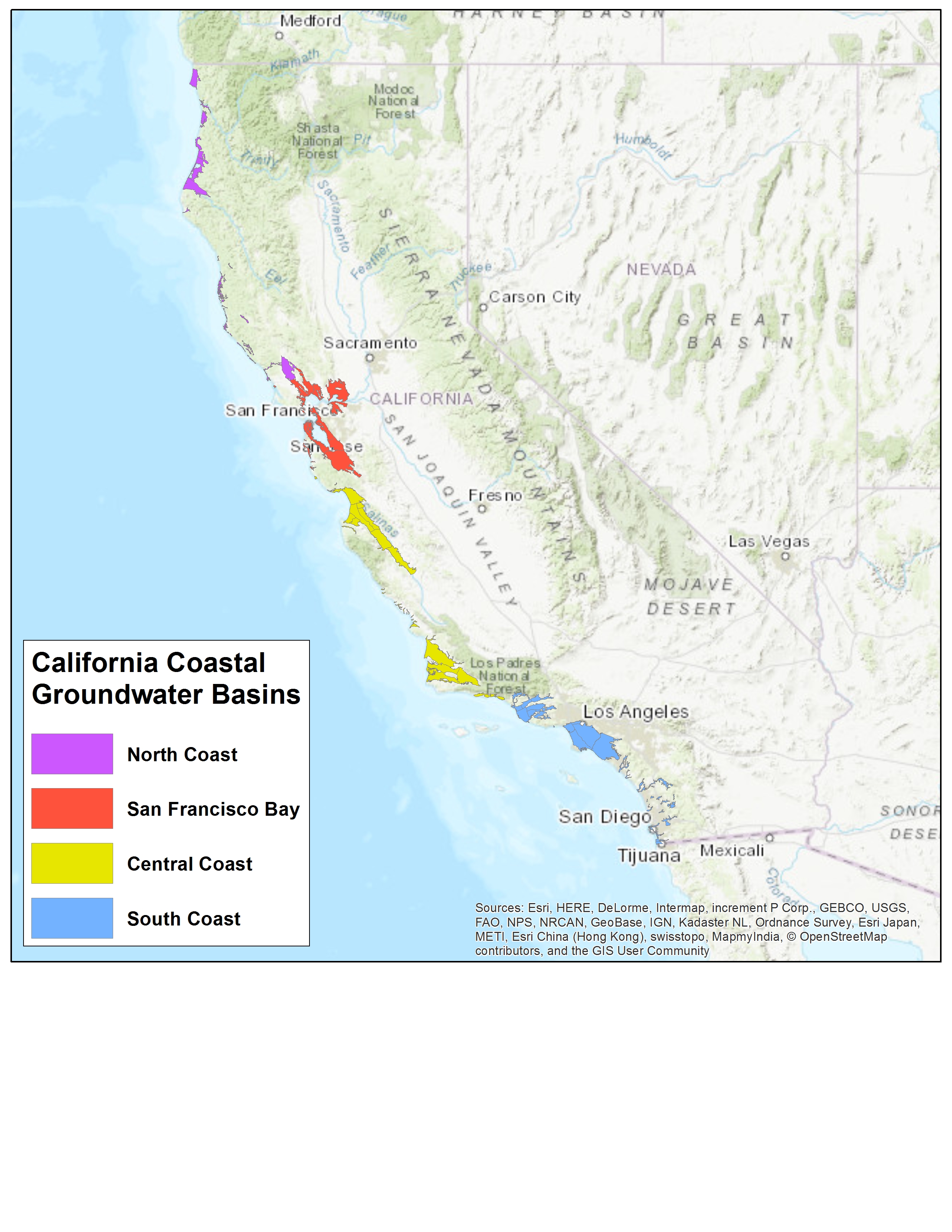This study seeks to quantify water availability in the California Coastal Basins (CCBs). The CCBs vary greatly in their geologic, hydrologic, and climatic conditions; predominant water uses (agricultural, urban, or environmental); and how water availability changes in response to natural and anthropogenic stresses. Considering the complex dynamics of the CCBs and the history of managing water supplies conjunctively, this study evaluates the variability of water supply and demand of all the components of the integrated hydrologic system. The main objective of this groundwater availability study is to develop water budgets and associated tools to quantify historical and current hydrologic conditions, and forecast future water availability. Analyzing the response of the physically disjointed CCBs is being done using an overarching supply-and-demand framework that emphasizes the differences between the four coastal hydrologic regions. Where numerical models exist, they are being updated and used to analyze the groundwater basins. Where models do not exist, they are being built or extrapolation is being done to represent system dynamics by the use of “metamodels”. In addition, web-based tools are being developed to allow users evaluate the water availability and dynamics of the CCBs. These tools will allow scientists, water managers, stakeholders, and the public to evaluate potential management actions for addressing current and forecasted water availability issues. This study is tailored to support the Sustainable Groundwater Management Act (SGMA).
Claudia Faunt, Supervisory Hydrologist
Steve Phillips, Groundwater Specialist
Zachary Stanko, Hydrologist
John Engott, Hydrologist
Mike Fienen, Research Hydrologist
Sally House, Information and Reports Specialist
Ayman Alzraiee, Hydrologist
Geoffrey Cromwell, Geologist
Don Sweetkind, Research Geologist
Whitney Seymour, Hydrologist



